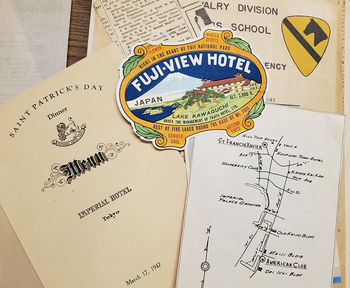
Late in 2017, I made a short but fruitful trip to the former Redemptorist vice-provincial residence and offices in New Smyrna Beach, Florida. Today it is a home for those Redemptorists in semi-retirement, but it also held for decades the records of the former Vice-Province of Richmond (VP Richmond), which in the summer of last year collapsed back into the mother Province of Baltimore. The records of this unit—which at one time scattered Redemptorists throughout the states of Florida, Georgia, the Carolinas, and Virginia—were supplementary to the documentation already available at the Redemptorist Archives in Philadelphia, which also contains extensive material related to Redemptorist activities in New Orleans, Baton Rouge, and Chatawa, Mississippi. All told there are about 179 linear feet of material pertaining to southern foundations east of the Mississippi River. Now they are all together under one roof in the City of Brotherly Love and Sisterly Affection.
The importance of the VP Richmond materials for the study of southern Catholicism in general and black Catholics in particular cannot be overstated. The house annals, or daily diaries of Redemptorists in each of their foundations, are a unique and precious trove of information. The archive also consists of thousands of documents, images, and scrap books and is without parallel among religious orders of similar size. Redemptorists have been preaching and ministering in the Southeast since the 1850s, when the first mission was preached in Norfolk, Virginia, in 1853. They established themselves in New Orleans a decade earlier by buying property in what became Ecclesiastical Square, in the heart of the Irish Channel. Redemptorists have also made their mark in the antebellum South, particularly William Hickley Gross, the bishop of Savannah from 1873 to 1885. However, it was only in 1926, when Bishop Patrick Barry of St. Augustine first invited Redemptorists to accept the parish of the Sacred Heart in New Smyrna Beach, Florida, that the Baltimore Province sent a small group that would blossom into the Vice Province of Richmond.
Located at the end of a railroad line, New Smyrna was a community literally divided by train tracks. The more affluent white neighborhoods contained Catholic households who built up the parish complex. But the Black Catholic porters and their families who dwelt on the other side of the tracks were equally in need of pastoral care, which the Redemptorists supplied at the little wooden church of St. Rita, an out-mission of Sacred Heart. They could be seen entering the shot-gun houses near St. Rita’s and occasionally they were taunted for associating with African American residents.
This scene would be repeated elsewhere. Ostensibly assigned to a parish, they would use their location as a form of missionary outreach to outlying populations, especially to African Americans and non-Catholics. The parish foundation in Newton Grove, North Carolina, was typical. It later became the first Catholic parish in the nation to integrate. The transformation of this place and the effects on the people has been the subject of intense scrutiny and we are very glad our collections have been used to such great effect—both for members of the parish who have learned about their own history as well as visiting scholars to the archive. Cushwa Research Travel Grant recipient Susan Ridgely is among them. Her work at the Redemptorist Archives has helped feed a book project on the generational effects of desegregation in the Diocese of Raleigh. Other scholarship is being generated through the use of the Richmond VP materials, including presentations that will be given at a May conference celebrating the 200th anniversary of the Diocese of Charleston, where Redemptorists have had an unbroken presence for the last 90 years.
Our office is not waiting for scholars to visit it; we are planning on coming to you. With the hiring of Brittnee Worthy, MLIS, in June of last year, we are anticipating a new phase for accessibility in archival research. Under her guidance, we anticipate the development of an online catalog of our 30,000-volume research library (ideally, linked with the Catholic Research Resources Alliance portal). We expect this platform to serve as a springboard for both our digital collections and at least some of our processed materials. In the meantime, the VP Richmond collection and most of our more than one million other documents are open to qualified researchers for their on site inspection. More information may be found at redemptorists.net/redemptorists/archives. Be sure to follow us on Facebook and Instagram.
This report appears in the spring 2020 issue of the American Catholic Studies Newsletter.
Image: Ephemera from the files of Father John Lehrinan, C.Ss.R., a former World War II chaplain and vice-provincial for the Redemptorist Vice-Province of Richmond, related to his experience as a chaplain in post-war Tokyo.